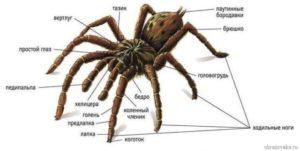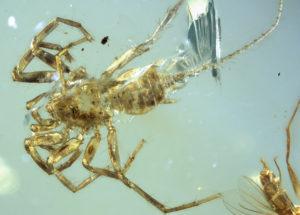Tailed spider: from ancient remains to modern arachnids
Spiders are an integral part of nature. They play an important role - they eat various pests and thereby help gardeners and gardeners. All varieties of spiders have the same structure. But scientists have found unusual individuals that had tails.
The structure of spiders
Spiders have a special structure that distinguishes them from other arachnids:
- the cephalothorax is extended;
- the abdomen is wide;
- curved jaws - chelicerae;
- foot tentacles - organs of touch;
- limbs 4 pairs;
- the body is covered with chitin.
Spiders with tails
Those who are called tailed spiders are actually representatives of arachnids, native to the tropics. They are called Telifons - non-poisonous animals, arthropods, which are similar to spiders and scorpions.
Animals with a process on the back, which is vaguely similar to a tail, live only in the regions of the so-called New World and partly in the Pacific regions. This:
- south of the USA;
- Brazil;
- New Guinea;
- Indonesia;
- south of Japan;
- Eastern China.
Representatives of the Telifona subspecies are quite large, from 2,5 to 8 cm in length. Their structure is identical to ordinary species of spiders, but the first segment of the abdomen is reduced, and the process is a kind of organ of touch.
These rather rare species reproduce by external-internal fertilization. Females are caring mothers, they stay in the mink until the babies appear. They stay on the mother's abdomen only until the first molt.
ancient tailed spiders
Scientists from India have found in the remains of amber a spider that lived more than 100 million years ago. These are arachnids that had spider glands and could weave silk. It was believed that the Uraraneida subspecies disappeared as early as the Paleozoic era.
The spiders found in the remains of amber from Burma, and they can be fully called that, were similar to those arachnids that live in modern times, but had a long tourniquet, the size of which exceeds even the length of the body.
The scientists named this species Chimerarachne. They became a transitional link between modern spiders and their ancestors. More accurate information about the representative of the species Chimerarachne has not been preserved. The caudal process was a sensitive organ that caught air vibrations and various dangers.
Conclusion
Tailed spiders of modern times are represented only in a few specimens. And their caudal process does not have arachnoid warts. And the ancient representatives were the same spiders, with an additional organ of touch - a long tail.
Previous
